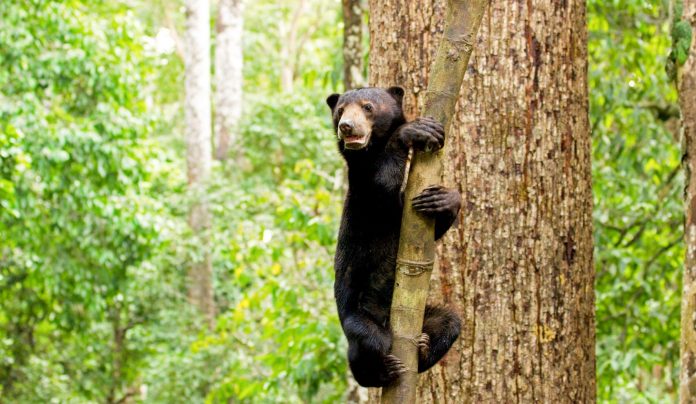A Sunshine Coast environmentalist is connecting the next generation of conservationists and others around the world to a little-known Asian rainforest and its critically endangered animal species.
Author and University of the Sunshine Coast tourism lecturer, Sarah Pye, knew little about sun bears or Borneo’s rainforests before visiting Malaysia in 2012.
But the day she met Dr Wong Siew Te, who built and runs the Bornean Sun Bear Conservation Centre, changed her life.
For the past decade, she’s been on a mission to educate others about Wong (as he likes to be known) and his goals to rescue sun bears from captivity, give orphans a chance at life, and rehabilitate them back into the wild where possible.
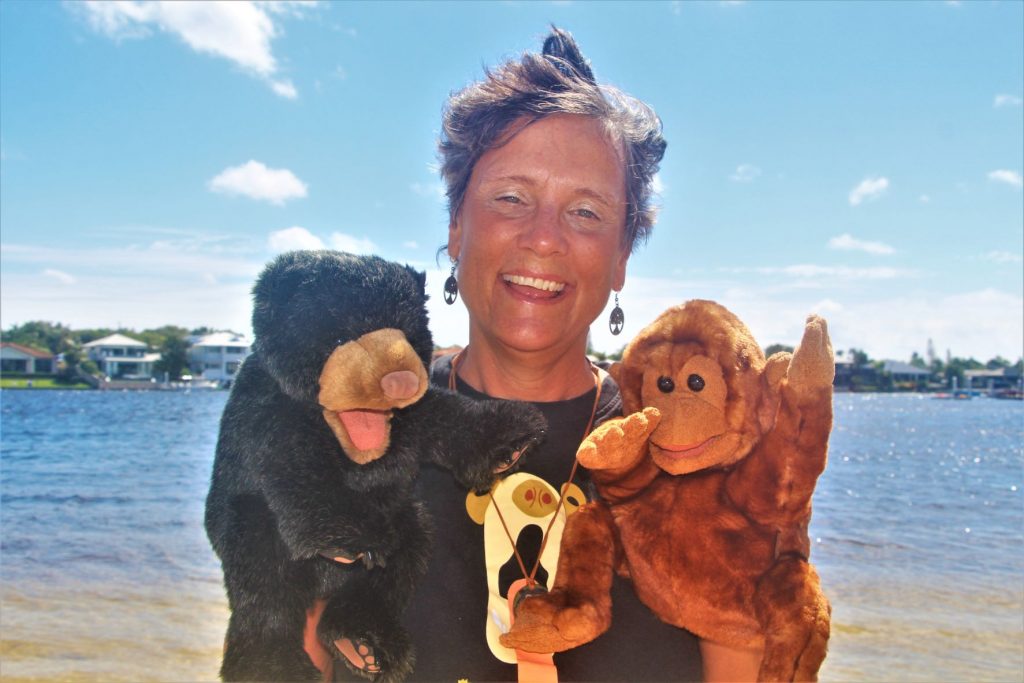
To date, 66 sun bears have been saved, with 45 currently being cared for in the world-class facility on Sabah Wildlife Department land.
It’s all about clawing back time and ensuring their numbers don’t dwindle further towards extinction.
Now Dr Pye is focusing her efforts on the younger generation – through a range of educational resources including a children’s book series, available through her new website that launched on January 28; festival presentations, readings and workshops; and puppet performances geared towards the Australian Curriculum.
“When I asked what I could do to help, Wong said: ‘Do what you do best’,” Dr Pye recalled.
“I went ostensibly to see orangutans in the wild and that was a good experience. But while I was there, someone said, ‘Why don’t you call Dr Wong and go and see the sun bear centre. It’s not open to the public yet’.
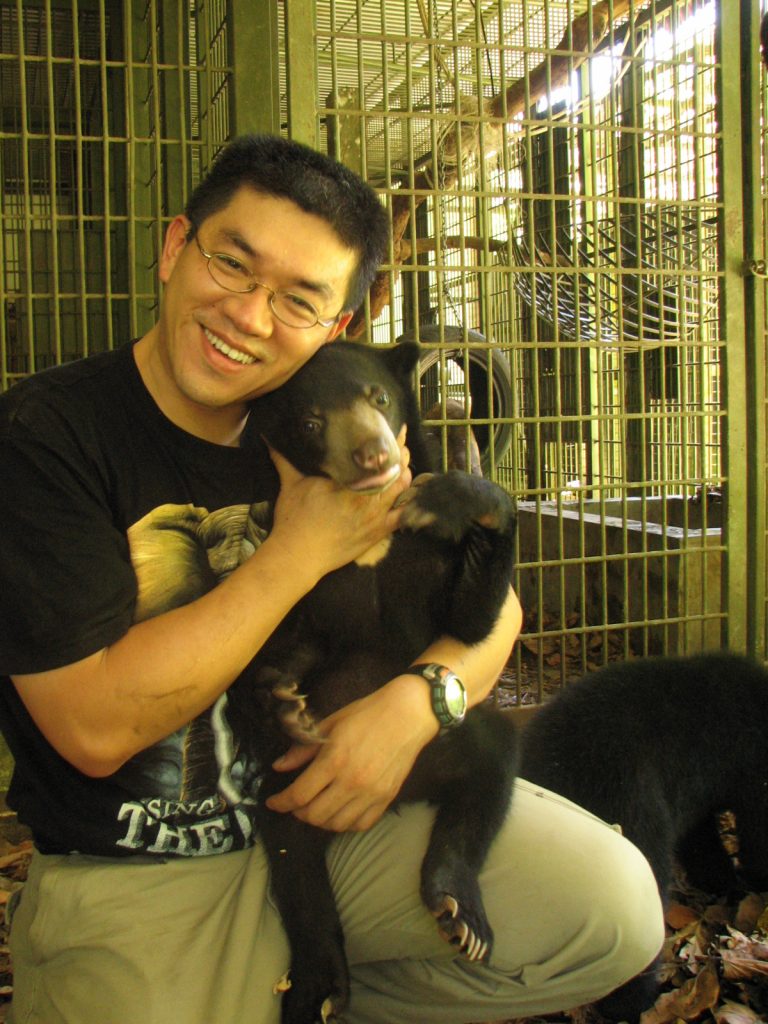
“As soon as I saw sun bears swinging from trees like orangutans and climbing 50m in the air … they’re just extraordinary creatures … (Wong’s) commitment had me hooked.”
Sun bears are only found in South-East Asia but the Malayan sun bears sub-species is endemic to Borneo and fighting for survival. They are smaller at 1.2m when fully grown and more arboreal (climbing trees).
Numbers have decreased dramatically over time because adult sun bears are poached for body parts thought to have medicinal properties.
With a background in tourism, public relations and journalism, Dr Pye has already spread the word about the sun bears’ plight and why Wong has devoted his life to saving them.
She introduced Wong to USC, which led to a Memorandum of Understanding between the university and the conservation centre. Numerous research projects and hands-on learning for tertiary students followed.
“For instance, this last semester, some of the USC students did some data analysis for Wong on the data that he has collected from released bears through collars,” Dr Pye said.
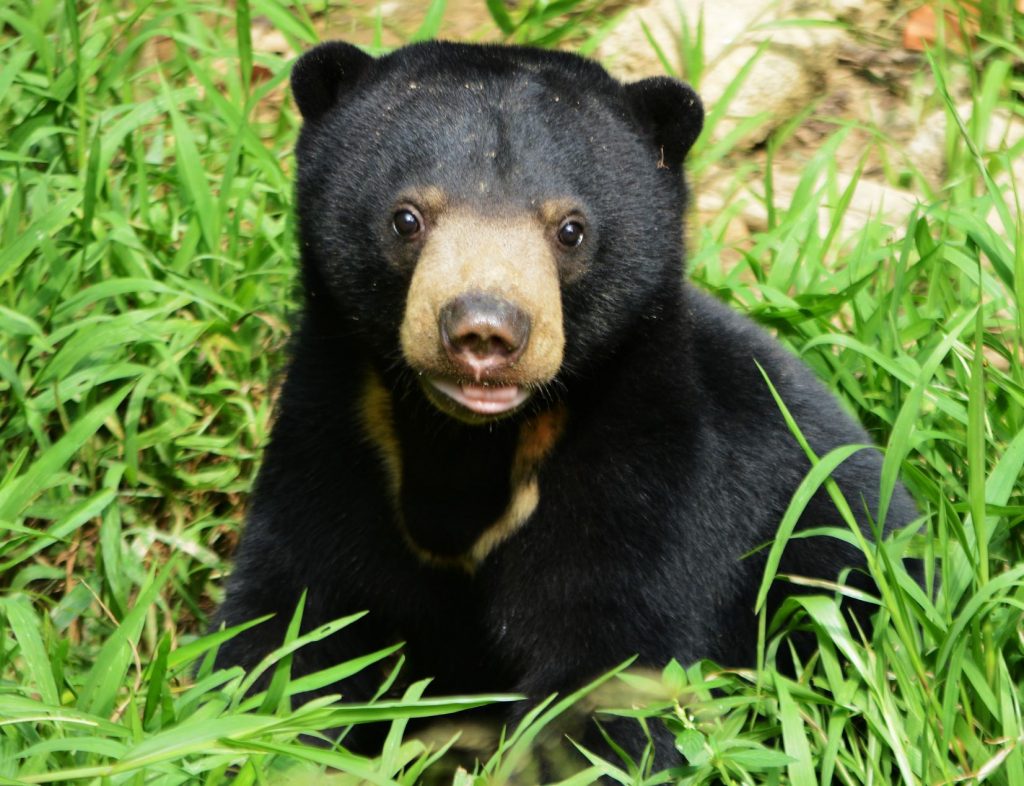
“How many sun bears are there in the world? They don’t know and that’s the biggest problem.
“They know there are far fewer (sun bears) than there are orangutans and orangutans are critically endangered.
“But there’s not been enough research about them to know exactly.
“In 2014, I led a team of PR students to Borneo and we created an adoption program for the sun bears which is still raising valuable money today and it’s more valuable now because the centre has been closed to the public due to COVID. So that’s actually helping keep them afloat right now.
“In 2016, I started writing Wong’s biography. So, it’s been a 10-year project so far.”
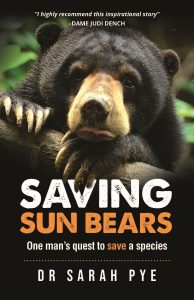 Dr Pye first published her book Saving Sun Bears: One Man ‘s Quest to Save a Species in 2020 as part of her Creative Arts doctorate at USC.
Dr Pye first published her book Saving Sun Bears: One Man ‘s Quest to Save a Species in 2020 as part of her Creative Arts doctorate at USC.
That book not only started the conversation about how ordinary concerned citizens could help save these adorable-looking sun bears but also broadened the understanding of rainforest conservation and extended the network of support for Wong’s work from a diverse range of people all over the world.
“The bigger picture with this is that it’s not just about sun bears, it’s about the rainforest,” Dr Pye said.
“So many people look at me with glazed eyes when I talk about the Bornean rainforest because it’s on the other side of the world and who cares?
“But the Bornean rainforest creates a lot of the oxygen we breathe in Australia. If we don’t save the rainforest then we suffer, not only all the other creatures.
“I feel really proud that what I’ve done has led in so many directions.
“I haven’t actually facilitated it all, but I did start some of the balls rolling which is really lovely and I’ve actually got a very good friendship out of it as well.”
Local journalists supporting local people. Help keep independent and fair Sunshine Coast news coming by subscribing to our free daily news feed. All it requires is your name and email. See SUBSCRIBE at the top of this article.
On the 10th day of every month, Dr Pye conducts the Saving Sun Bears Online Club that anyone can join on Zoom at no cost.
“We have 20 core people in the network. They are people dedicated to saving sun bears all around the world,” Dr Pye said.
“For example, Casey Woodward is a vet in Australia. She gathered vet medicines reaching their used-by date and she sent them to Wong.
“People zoom in from Prague (Peter, who’s volunteered at the centre, comes every single month), the UK and Vancouver (Irene and her daughter Taylor often wake up at 3 in the morning for the Zoom, and Taylor’s goal in life is to be a wildlife conservationist).
“Wong shares what’s going on at the centre, I share what’s going on in my world and then people just say, ‘This is what I’ve done’ and we support each other.”
Dr Pye sees the next generation of conservationists as crucial to saving the planet and aims to connect them, one story at a time, through the Wildlife Wong book series for ages 8-12.
Nine self-funded, self-published books – each telling a different conservation story – will make up the series that should be completed next year.
The fourth in the series, Wildlife Wong and the Bearded Pig, will be launched at noon on March 9 at the upcoming Voices on the Coast children’s literary festival, run by Immanuel Lutheran College. The festival will be held online from March to May this year, enabling the launch to reach a global audience.
“They’re all non-fiction stories about Wong,” Dr Pye said.
“I’m not making these up. These are his real adventures.
“Each one has a non-fiction narrative about him and that animal, and then it includes informational facts – for example, statistics (some kids just love stats) – and at the back there are experiments. So, the books are multi-disciplinary and allow kids to actually become scientists.”
Like stories about Sunshine Coast people doing great things? Help us deliver more by registering for our free daily news feed. All it requires is your name and email. See SUBSCRIBE at the top of this article.
A chance meeting with Maleny puppeteer Rebecca Dostal at the Sunshine Coast Environment Council’s World Environment Day Festival in Doonan last year set Dr Pye on a new path to engaging the children.
“She said, ‘I have an orangutan puppet. I think you need it’. And that opened up a whole new world,” Dr Pye said.
“I started using the puppet to help me tell the stories and it engaged the kids so much.
“Puppets allow me to tell some of these really challenging environmental stories like habitat loss and wildlife pet trade and global warming in interesting, humorous ways that connect kids.
“I’m learning a new skill from Rebecca. She’s just a fantastic puppet maker and she’s helping me create characters around these (books).”
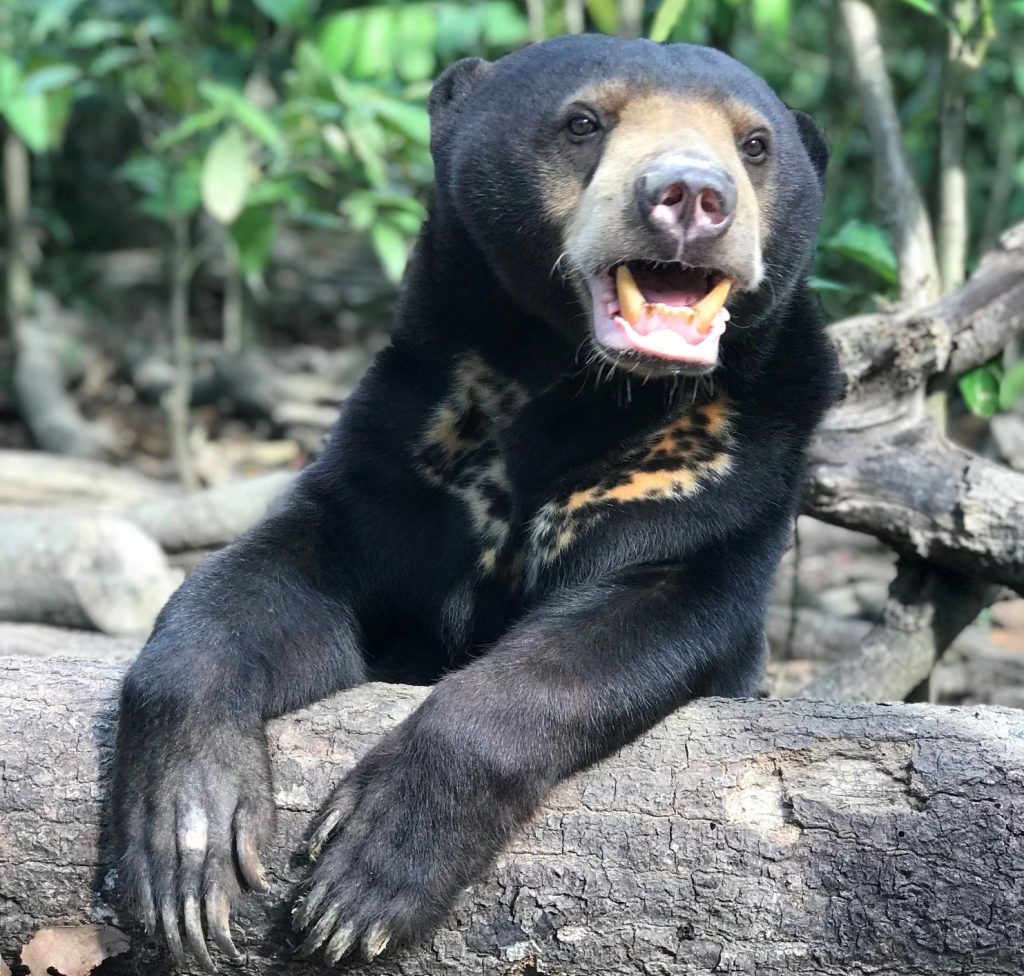
Puppets including Luna the Sun Bear, Piggy the Agricultural Pig and Bongo the Macaque are helping Dr Pye get her message across in schools such as Buderim Mountain State School and festivals including Bushtime at Woodfordia. Dr Pye will also conduct a reading and workshop at the World Science Fest in South Bank, Brisbane, on March 13.
“My next book Wildlife Wong and the Bearded Pig includes a story about Piggy the agricultural pig that Wong raised. That helps us lead into stories about wild pigs and what the difference is. So my pig puppet helps me tell those stories about the link between agriculture and wild animals.”
From that “sliding doors” moment in 2012, Dr Pye believes she has found her own special niche in the world.
She’s been back to Borneo and worked in the conservation centre on four other occasions, including time in the Bear House, taking personal care of the animals on their path to freedom.
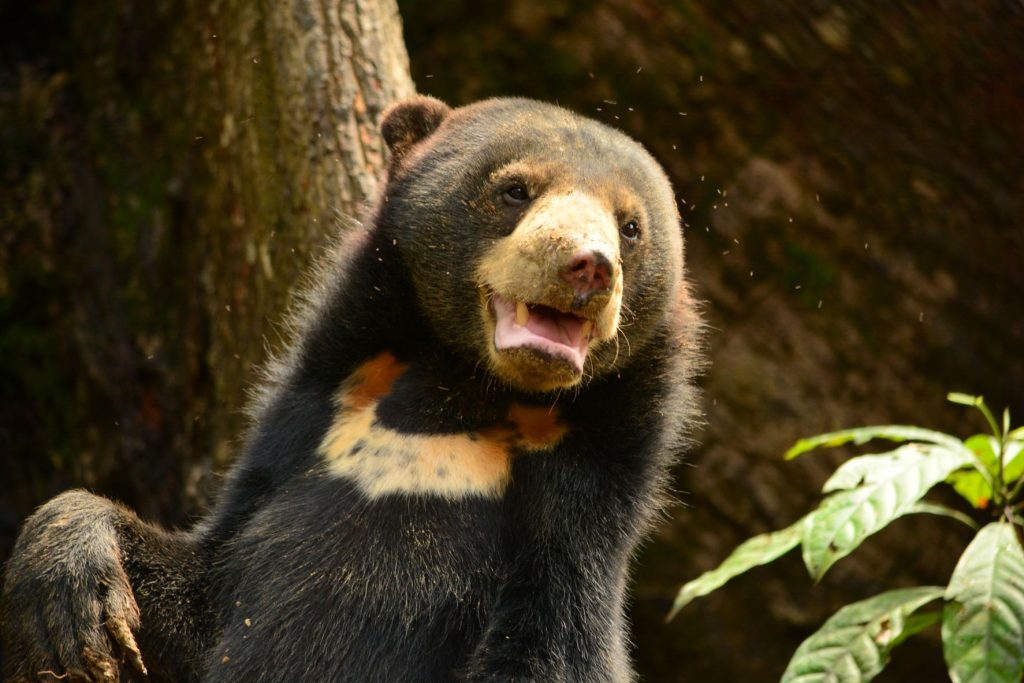
Her face beams as she relives the thrill of releasing Debbie and Damai into the jungle of Tabin Wildlife Reserve, which forms the final chapter of her Saving Sun Bears book.
“I flew to Borneo and watched them being sedated. We did a whole medical check on them and transported them through the night to the edge of a national park,” she said.
“We did it at night so they didn’t get stressed with the heat.
“And then we were met by a helicopter. We put them in an undersling cargo net beneath the helicopter.
“We flew them into the middle of this national park, which is twice as big as Singapore, landed on a pimple on the top (which is a mud volcano), and released the two bears back into the wild – then flew back.
“It was my ‘Jane Goodall moment’, really.
“Who would have ever thought I’d get to do that? It was worth four years of my doctorate just for that moment.”


